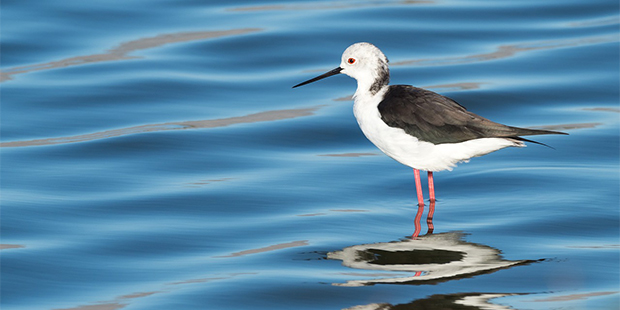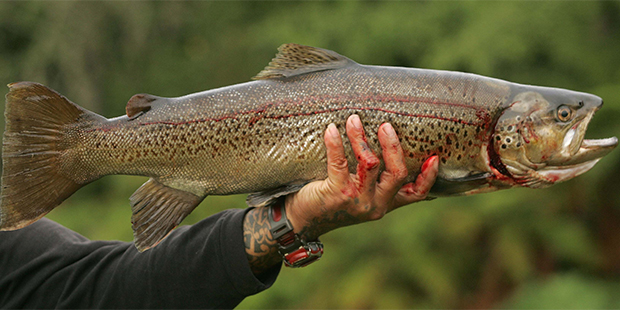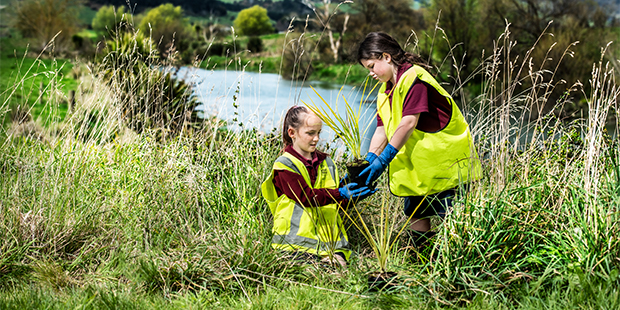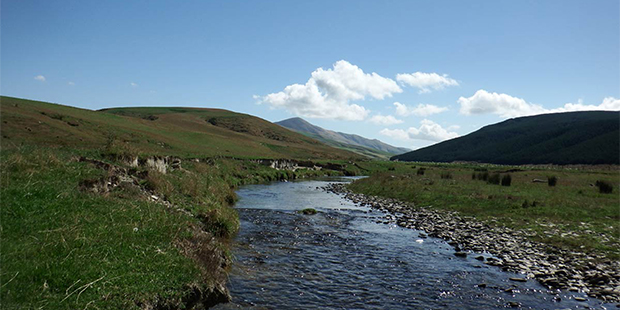How a Snake is helping trout
Action in Snake Creek is bringing back healthy numbers of trout in one of NZ's best fishing spots.


Environmentalists believe they are gaining the upper hand in a battle to arrest the ecological decline of a South Island river long considered one of New Zealand’s best trout fishing spots.
Emily Arthur-Moore, who is managing a Water and Wild Life Habitat Trust project to restore tributaries of the Selwyn/Waikirikiri River in Canterbury, says it once boasted big numbers of the fish. In 1962 it was able to support a run of 14,000 brown trout; today, even though there is still good fishing in parts of its waters, Arthur-Moore says those numbers are thought to have fallen to less than 1000.
Climate change and land intensification contributed to this, she says and there are issues with sediment build-up and nitrate build-up in ground water.
But restorative work being carried out by the trust and local dairy farmers in the river’s Snake Creek tributary is beginning to achieve results. Monitoring is showing invertebrates (such as insects and worms), a vital part of the river’s food chain, are responding well to improvements in their habitat.
“The condition of invertebrates is one of the best indicators of the health of a river and if we get that right everything else will follow,” says Arthur-Moore. “It is still early days but the first year of monitoring is producing good signs and we are hopeful the second year of tests will show more improvement.”
The Snake Creek project was named as a finalist in the 2019 New Zealand River awards run by the Cawthron Institute to draw attention to the state of New Zealand rivers - and to remedial action being taken by communities, farmers, councils and industry.
Arthur-Moore’s work is being carried out in the river’s Silverstream catchment, identified by Environment Canterbury as a priority for restoration. At this stage work is focused on Snake Creek, but future work is planned in two other tributaries.
“Over the last 30 years the health of the Selwyn and its catchment has declined,” says Arthur-Moore. A 2018 article published in Agriview NZ said fishing in the Selwyn began to take a dive in the 1980s and has never fully recovered, with the trout population now at record lows.
“Between 1980 and 2006 a 63 per cent reduction occurred in total available spawning area for trout,” the article said. “This situation continued to worsen and it is believed that area may have been reduced as much as 90 per cent.”
DairyNZ’s principal scientist (water quality), Craig Depree says trout numbers declined earlier than that, when the infamous Wahine storm of 1968 destroyed trout habitat of weed beds – with data showing the population of trout in the river dramatically dropped from 65,000 to 3000 after the storm. A second decline is believed to have reduced numbers further after land use intensification – and while restoration can help with the second decline, it cannot address the more significant decline caused by the post-storm changes.
Arthur-Moore says the project is aiming to restore a 4km stretch of Snake Creek. Working with local farmers - who are putting up fencing and helping with site preparation - the team has undertaken planting close to the water to provide shading and to limit the growth of weeds.
“It means less sediment in the stream bed because the weeds aren’t there to trap it,” she says. “We also made traps to slow the flow and capture sediment which can then be removed from those spots rather than dredging the whole creek.
“Dredging is harsh on aquatic plants and invertebrates and affects the whole ecosystem. While the amount (of sediment) going in has reduced, traps indicate that fencing and planting isn’t enough; we have to do more.”
Other enhancements include the placement of boulders and wood and gravel-filled hessian bags to recreate pools and riffles (shallow landforms in flowing water) that are important to stream life. These features mean the creek can support more fish and help improve the availability of food particularly for tuna (eels) and trout.
The work has also seen an end to the use of diggers to clean out weeds from the stream. This had been common practice for some time (the resultant debris being dumped on the banks) but it was destructive to aquatic life.
Resource consents to carry out the work required approval from landowners and iwi and, after some initial reservations, landowners are happy with what is being done. Funding for the project has been received from the Ministry for the Environment, Living Water, Environment Canterbury, North Canterbury Fish and Game, Pub Charity, Selwyn District Council and landowners.






